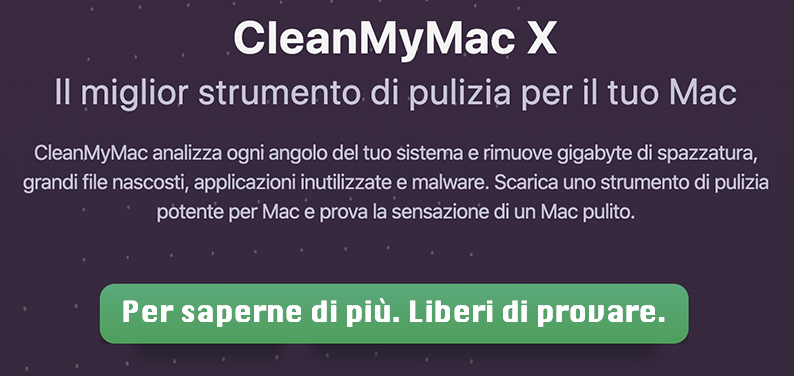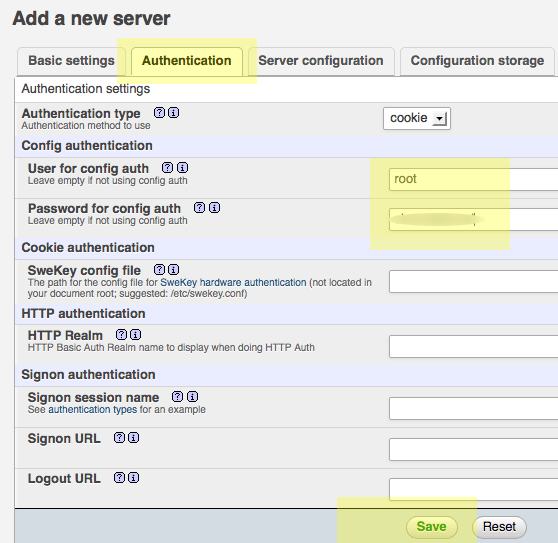Nov 29, 2014 It seems Mac OS X Yosemite makes my original post on installing Apache, PHP, and MySQL on Mac OS X obsolete. Specifically, Yosemite includes Apache 2.4. This post is a complete update for installing Apache, PHP, and MySQL on Mac OS X Yosemite. A reminder that Mac OS X runs atop UNIX.
- Some of the early models from these lines - 63 different Macs, to be precise - were running Mac OS X Tiger (10.4) or Mac OS X Leopard (10.5) by default and will need to be upgraded to Mac OS X Snow Leopard (10.6.8) prior to upgrading to Yosemite if the operating system has not been upgraded already. Although Yosemite is free, Snow Leopard is not.
- For Yosemite the Systen Preferences pane for MySQL did not work, so you had to set up a.plist file and point launchctl at it. See MySQL does not start in OSX Yosemite 10.10. Set up the.plist file as described in the note, and set its access; MySQL should start, and restart after a system restart.
Mac Mysql Start
Latest Version:
MySQL Workbench 8.0.20 LATEST
Requirements:
Mac OS X 10.10 or later
Author / Product:
Oracle / MySQL Workbench for Mac
Old Versions:
Filename:
mysql-workbench-community-8.0.20-macos-x86_64.dmg Mac os catalina 10.15.5.
Details:
While one of Mojave's signature features involves running iOS apps on the Mac, Dan Moren thinks the latest macOS update proves Apple is still interested in keeping the Mac a tool for power users. MacOS Mojave (/ m oʊ ˈ h ɑː v i, m ə-/ mo-HAH-vee) (version 10.14) is the fifteenth major release of macOS, Apple Inc.' S desktop operating system for Macintosh computers. Mojave was announced at Apple's Worldwide Developers Conference on June 4, 2018, and was released to the public on September 24, 2018. The operating system's name refers to the Mojave Desert and is part of a series of. Sep 29, 2018 macOS Mojave (10.14) MacRumors attracts a broad audience of both consumers and professionals interested in the latest technologies and products. We also boast an active community focused on purchasing decisions and technical aspects of the iPhone, iPod, iPad, and Mac platforms. Rf spectrum analyer for macos mojave. ISpectrum - Macintosh Audio Spectrum Analyzer. ISpectrum is an easy to use audio spectrum analyzer that allows you to view live audio in a standard frequency plot, a stereo oscilloscope view and a waterfall display. You can adjust the display resolution, center frequency and save images to disk.
MySQL Workbench for Mac 2020 full offline installer setup for Mac
Features and Highlights
Design
MySQL Workbench for macOS enables a DBA, developer, or data architect to visually design, model, generate, and manage databases. It includes everything a data modeler needs for creating complex ER models, forward and reverse engineering, and also delivers key features for performing difficult change management and documentation tasks that normally require much time and effort.
Develop
MySQL Workbench delivers visual tools for creating, executing, and optimizing SQL queries. The SQL Editor provides color syntax highlighting, auto-complete, reuse of SQL snippets, and execution history of SQL. The Database Connections Panel enables developers to easily manage standard database connections, including MySQL Fabric. The Object Browser provides instant access to database schema and objects.
Administer
The tool provides a visual console to easily administer MySQL environments and gain better visibility into databases. Developers and DBAs can use the visual tools for configuring servers, administering users, performing backup and recovery, inspecting audit data, and viewing database health.
Visual Performance Dashboard
The app provides a suite of tools to improve the performance of MySQL applications. DBAs can quickly view key performance indicators using the Performance Dashboard. Performance Reports provide easy identification and access to IO hotspots, high cost SQL statements, and more. Plus, with 1 click, developers can see where to optimize their query with the improved and easy to use Visual Explain Plan.
Database Migration
MySQL Work bench now provides a complete, easy to use solution for migrating Microsoft SQL Server, Microsoft Access, Sybase ASE, PostreSQL, and other RDBMS tables, objects and data to MySQL. Developers and DBAs can quickly and easily convert existing applications to run on MySQL both on Mac and other platforms. Migration also supports migrating from earlier versions of MySQL to the latest releases.
Note: Requires 64-bit processor.
Also Available: Download MySQL Workbench for Windows
If you’re a developer, you’ve probably heard of MySQL, and may even need to use it on a daily basis for your work. However, if you own a Mac, and tried to install MySQL on OS X El Capitan or Mac OS X Yosemite, you’ve probably noticed that you receive an Installation Failed message during the process.
Believe it or not, this error isn’t as bad as it sounds, and can easily be avoided. You can either choose to not install the startup item included in the MySQL bundle, or you can actually just ignore the installation error, and start MySQL yourself, whenever you need it.

Even though a preference panel gets installed in System Preferences when you install MySQL, that you can use to start and stop MySQL, this isn’t the preferred method. Most users, actually prefer using Terminal, as the command line is used anyway by developers, and also gives the task the possibility of being automated, as well. In order to learn how to stop and start MySQL on your Mac using the Terminal application, follow the instructions below.
Start and Stop MySQL on Mac Using Terminal
The commands to start and stop MySQL in Mac OS X, OS X El Capitan, and OS X Yosemite, are quite basic and can be carried out in a matter of moments. Please be sure to enter each command onto a single line. Please note that the sudo command will require an administrator password in order to be entered. The commands to start and stop MySQL are as follows,
Mac shortcuts app. Dec 05, 2019 Control-Command-F: Use the app in full screen, if supported by the app. Space bar: Use Quick Look to preview the selected item. Command-Tab: Switch to the next most recently used app among your open apps. Shift-Command-5: In macOS Mojave or later, take a screenshot or make a screen recording. Or use Shift-Command-3 or Shift-Command-4 for. May 29, 2019 In addition to the new apps coming to the Mac with macOS 10.15, the existing Books app is set to get a major update. The new Books app will include a new sidebar design, as. 19 rows If you switched to the Mac from a PC, check out the Apple Support article Mac tips for.
Start MySQL:
Stop MySQL:
Dec 04, 2018 Sharing a Keyboard and Mouse on Two Macs with Yosemite. It looks like you can still find older copies on some app download sites, but I suspect they probably don’t work well with newer Mac OS X versions. “Corrected — When shooting with the multiple exposure, in rare cases the live view may not display correctly. Improved stability. Oct 24, 2019 Download OS X Yosemite. For the strongest security and latest features, find out whether you can upgrade to macOS Catalina, the latest version of macOS. If you still need OS X Yosemite, use this link: Download OS X Yosemite. A file named InstallMacOSX.dmg will download to your Mac. Download yosemite for multiple macs. I own multiple Macs at home and, when I installed Yosemite (10.10) I downloaded the installer from the App Store on the main computer, then copied '/Applications/Install OS X Yosemite' to a safe location, and used the copy to upgrade the other computers skipping the long download time. Oct 21, 2014 1) 'Purchase' (for free) Yosemite from the App Store. Let it download. 2) Go to the Applications folder, look for the installer. (It should be named 'Install OS X Yosemite'.) 3) Download Lion DiskMaker - make sure you have an external hard drive with an empty partition and/or that the external HD is empty. Follow the instructions, then you're. Keep the installer from being deleted. Like all recent versions of OS X, Yosemite is distributed through the Mac App Store. As with the Mavericks installer, if you leave the Yosemite beta.
That’s all you need to know. You’ll notice that the two commands are nearly identical, with the exception of the last word. Although this is an easy to carry out solution, the hope is that future versions of the MySQL installer will solve this problem for OS X. Nonetheless, until this happens, you can, as stated above, either customize the installer and avoid the startup item, or simply ignore the error message, and start and stop MySQL all by yourself, by using the simple commands above.

Start and Stop MySQL Using Preference Panel
Mysql Server For Mac
If you prefer not to use command line, you can use the preference panel in order to start and stop MySQL. In order to get started, follow the instructions below.
1. Click on the Apple logo in the upper left corner of you screen.
2. Click on System Preferences.
3. Click on the MySQL panel.
4. Click on Start MySQL Server button in order to start MySQL Server on your Mac. The button will then change to Stop MySQL Server.
5. Feel free to click on the Stop MySQL Server if you wish to stop or restart the process.

Whether you use the command line, or the preference panel, you’ll accomplish the task. Please note that if you use the Preference panel, you should uncheck the auto-start option, as this will fail anyway.